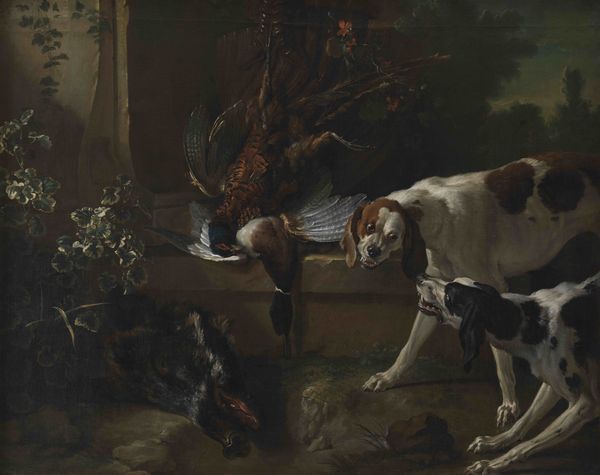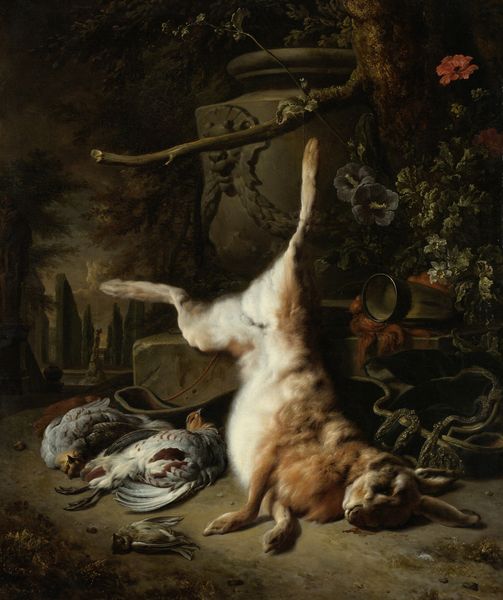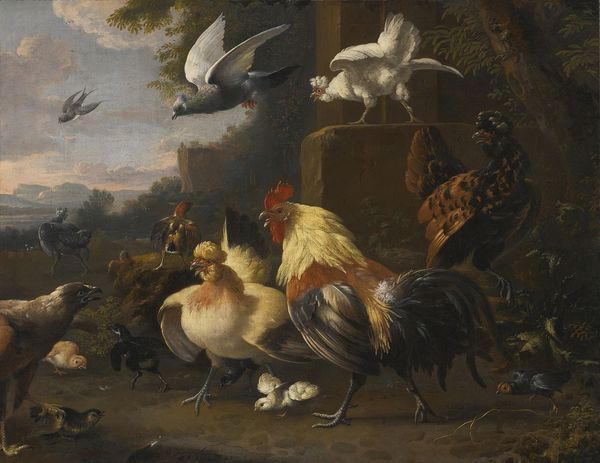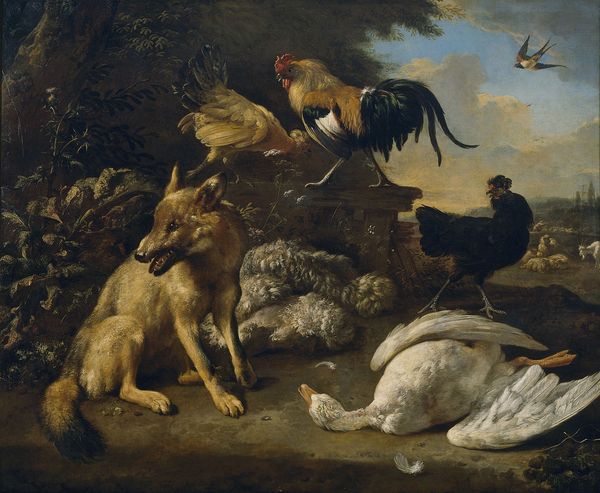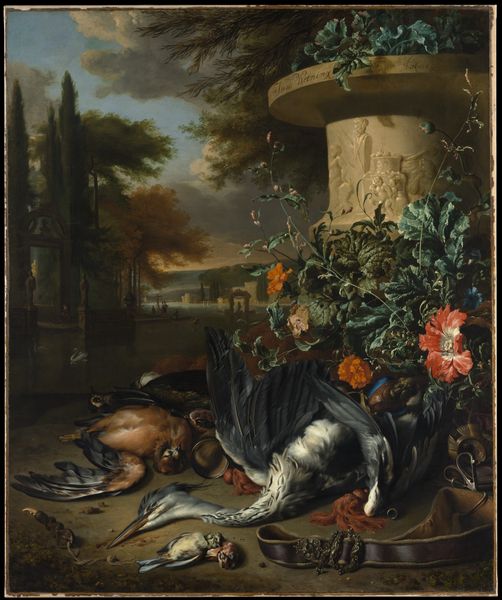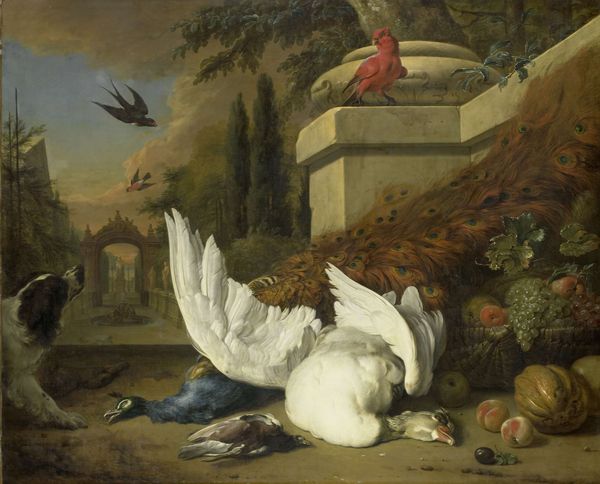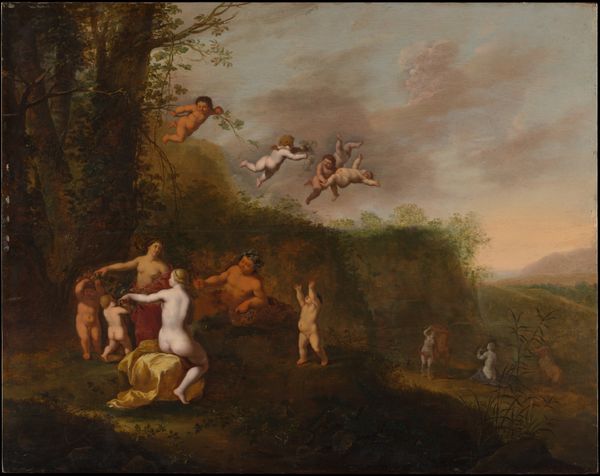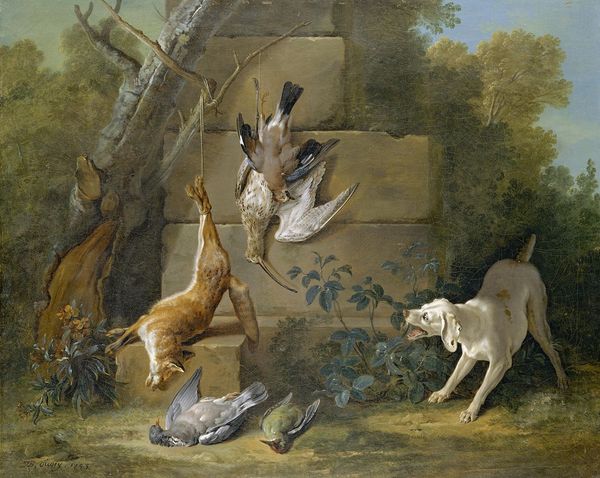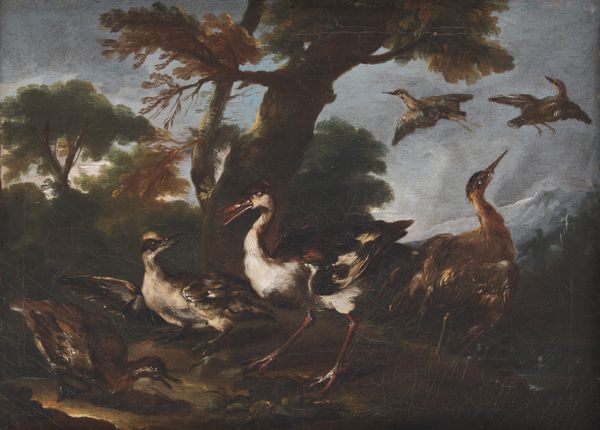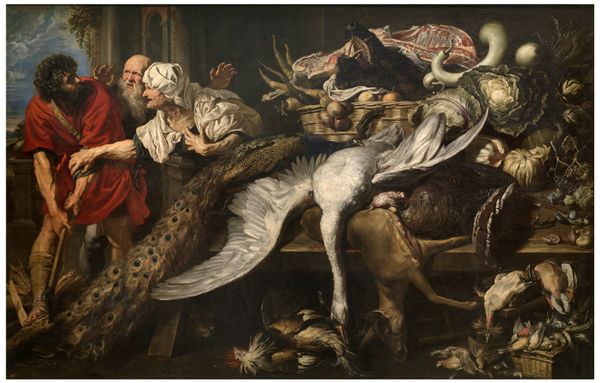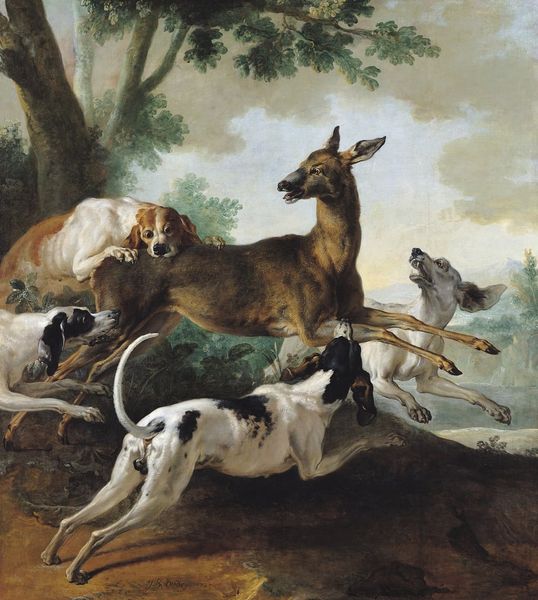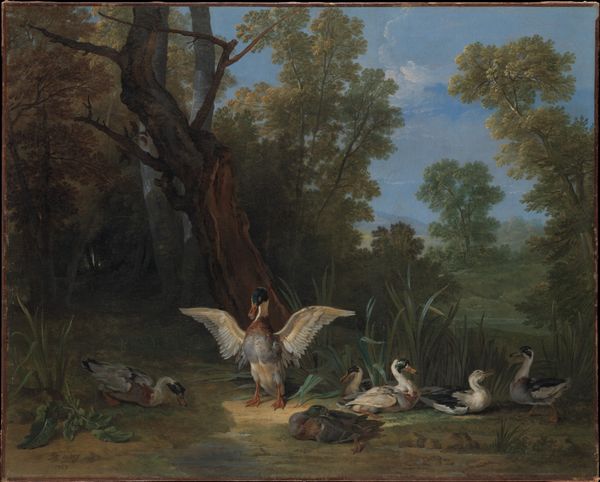
painting, oil-paint
#
baroque
#
dutch-golden-age
#
painting
#
oil-paint
#
landscape
#
genre-painting
Dimensions: overall: 142.9 x 172.4 cm (56 1/4 x 67 7/8 in.) framed: 173.4 x 202.3 x 14.9 cm (68 1/4 x 79 5/8 x 5 7/8 in.)
Copyright: National Gallery of Art: CC0 1.0
Jan Weenix, working sometime in the 17th or 18th century, painted this still life of dead animals arranged before a country estate. Weenix lived in an era of Dutch prosperity built on global trade, a trade which included the exploitation of both natural resources and enslaved people. Still life paintings, especially those featuring dead game, were popular among the wealthy, celebrating their hunting prowess and culinary excess. The limp swan, the lifeless rabbit, and the subdued dog at the bottom right are testaments to the exercise of power. The artist displays his skill through the precise rendering of textures: the soft feathers, the dog’s fur, and the cold stone architecture. Yet, the image invites us to consider the cost of such opulence. The painting becomes an allegory of domination, where even nature is subdued and arranged for aesthetic and gustatory pleasure. Weenix asks us to consider the violence inherent in the Dutch Golden Age.
Comments
No comments
Be the first to comment and join the conversation on the ultimate creative platform.
